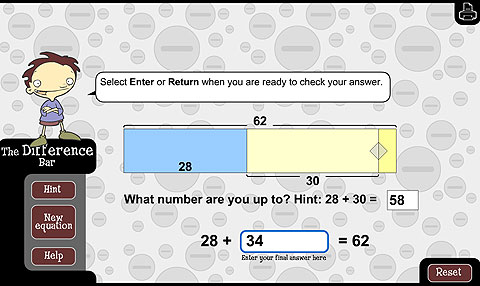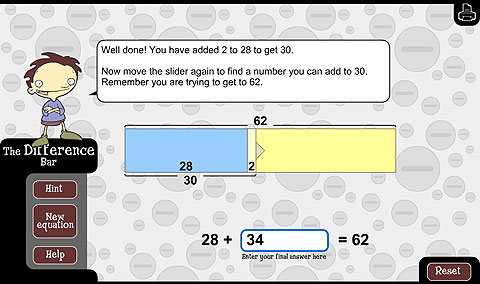Home > Mental computation > Good teaching > Addition and subtraction > Subtraction as difference > Differences
Differences
Difference problems compare the number of items in two sets.
For example, Julie has 28 sports cards and Cilla has 62 sports cards. How many more cards does Cilla have than Julie?
Note that the problems may be seen as either:
- change unknown addition (e.g. 28 + ? = 62) or
- result unknown subtraction (e.g. 62 – 28 = ?).
Adding on is usually the easier way to find a difference between two whole numbers. Memory load is reduced since the single number used at the start of the calculation does not have to be remembered after that.
You can watch the Differences video.
You can download the Differences video transcript.
Students can practise finding differences between two-digit whole numbers using the digital learning objects L112 The difference bar: generate hard subtractions and L110 The difference bar: make your own hard subtractions.
Note that creating friendly numbers is also a good strategy for solving difference problems.
In this example 28 + ? = 62 is solved using 28 + 2 + ? = 68.
You can read more about inverse operations.


